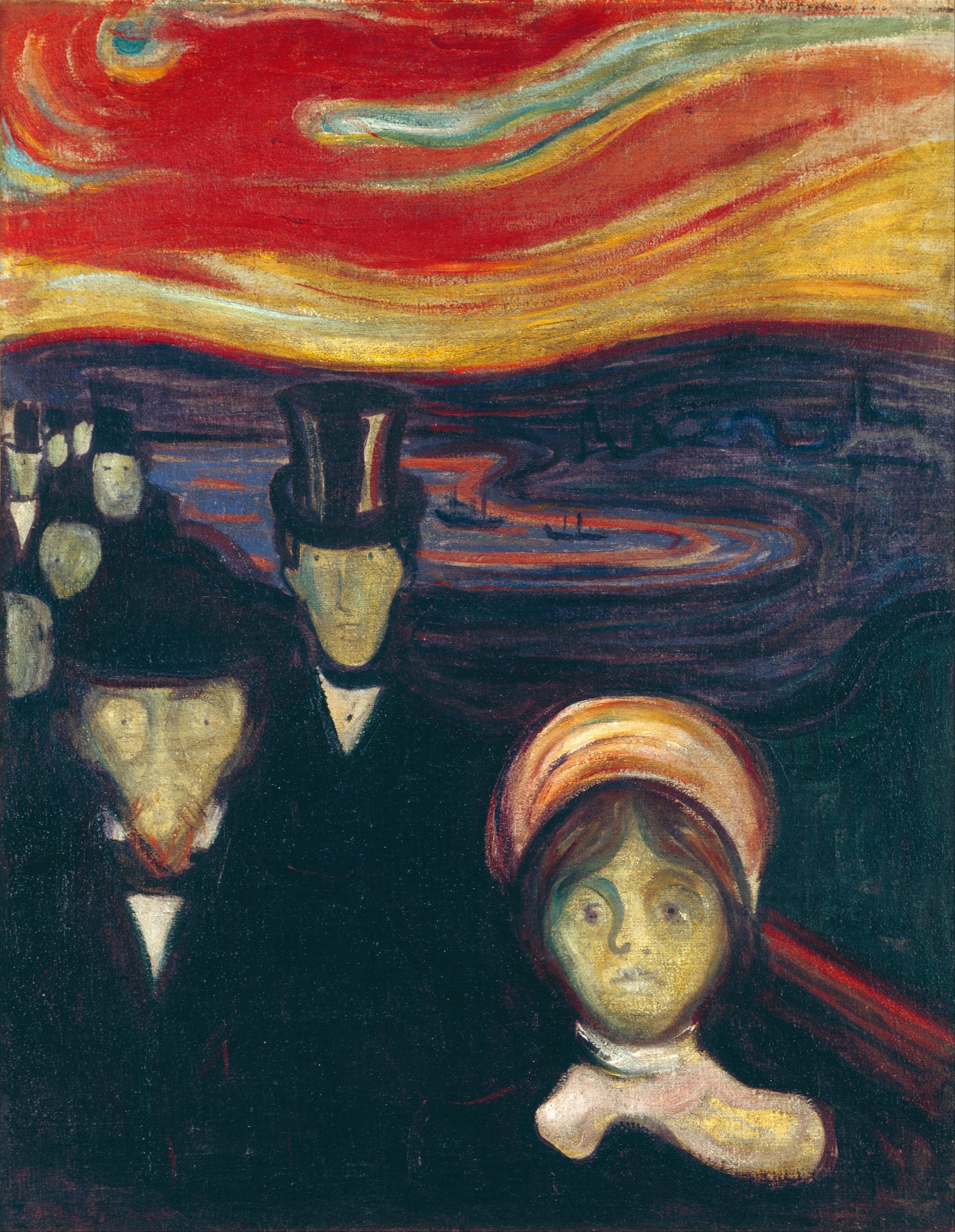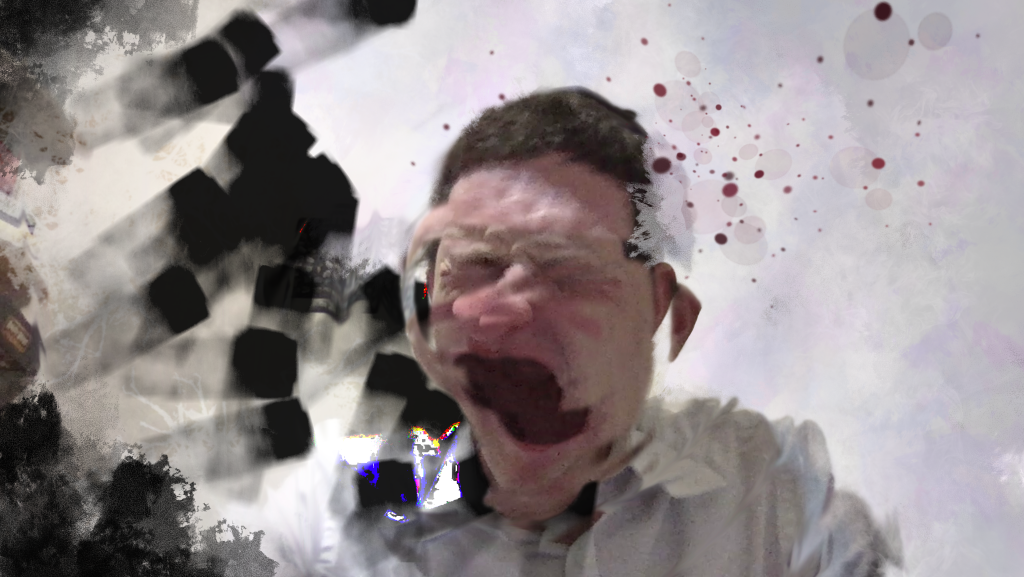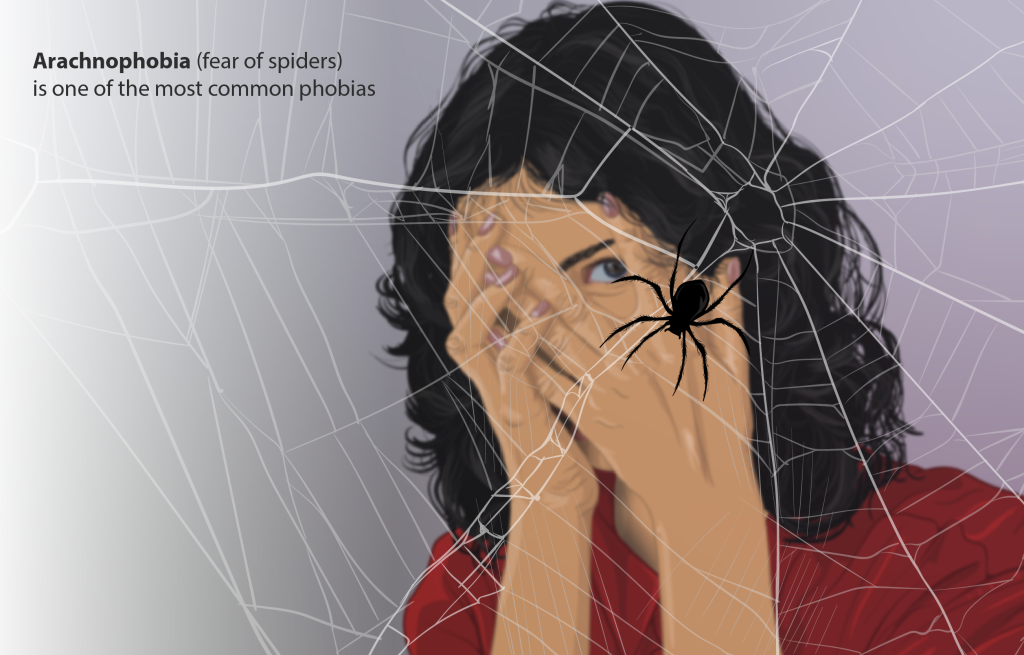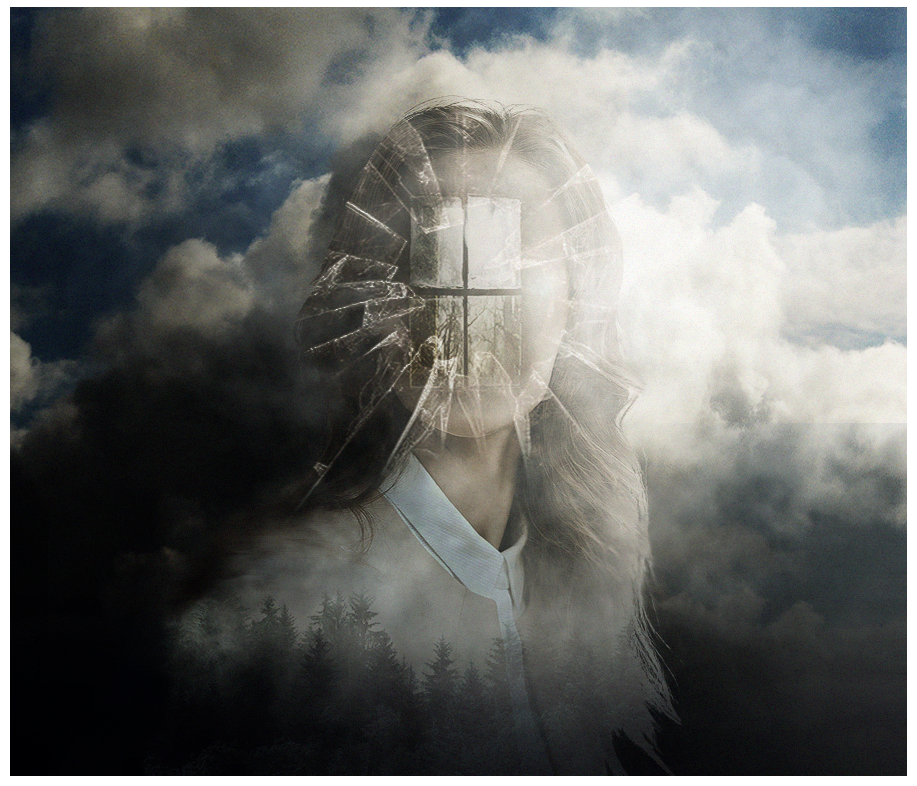Anxiety disorders are a common mental health problem. Research indicates 19% of adults and 31% of adolescents have an anxiety disorder in the United States.[1] The percentage of adults with an anxiety disorder associated with various levels of anxiety are estimated as mild (43%), moderate (33%), and severe (23%).[2]
There are several types of anxiety-related disorders, including generalized anxiety disorder, social anxiety disorder, panic disorder, phobia-related disorders, separation anxiety, and selective mutism.[3]
Generalized Anxiety Disorder
The Diagnostic and Statistical Manual of Mental Disorders (DSM-5) defines generalized anxiety disorder (GAD) as “excessive anxiety and worry, occurring on more days than not for at least six months, about a number of events or activities (such as work or school performance).” The individual finds it difficult to control the anxiety and worry, and it is associated with at least three of the following symptoms[4]:
- Restless or feeling keyed up or on edge
- Being easily fatigued
- Difficulty concentrating or going mentally blank
- Irritability
- Muscle tension
- Sleep disturbance (difficulty falling or staying asleep or restless, unsatisfying sleep)
The anxiety, worry, or physical symptoms cause clinically significant distress or impairment in social, occupational, or other areas of functioning and are not attributable to the physiological effects of a substance, medical condition, or other mental disorder.[5] See Figure 9.3[6] for an artist’s depiction of feelings of anxiety.

Social Anxiety Disorder
Social anxiety disorder was previously called social phobia. The DSM-5 defines social anxiety disorder as marked fear or anxiety about one or more social situations in which the individual is exposed to possible scrutiny by others. Examples include social interactions (e.g., having a conversation, meeting unfamiliar people), being observed (e.g., eating or drinking), and performing in front of others (e.g., giving a speech). The individual fears they will act in a way or show anxiety symptoms that will be negatively evaluated by others, so social situations are avoided or endured with intense fear or anxiety. This fear, anxiety, or avoidance is persistent and typically lasts for six months or more and is not related to a substance, another mental health disorder, or medical condition. It results in clinically significant impairment in social, occupational, or other important areas of functioning. In children, the fear or anxiety may be expressed by crying, tantrums, freezing, clinging, shrinking, or failing to speak in social situations.[7]
Panic Disorder
People with panic disorder have recurrent unexpected panic attacks. Panic attacks are sudden periods of intense fear that come on quickly and reach their peak within minutes. Attacks can occur unexpectedly or can be brought on by a trigger, such as a feared object or situation. A panic attack can be caused solely by the fear of having a panic attack.[8] See Figure 9.4.[9]

The DSM-5 defines a panic attack when four or more of the following symptoms occur[10]:
- Palpitations, a pounding heartbeat, or an accelerated heart rate
- Sweating
- Trembling or shaking
- Sensations of shortness of breath or smothering
- Feelings of choking
- Chest pain or discomfort
- Nausea or abdominal distress
- Feeling dizzy, unsteady, light-headed, or faint
- Chills or heat sensations
- Paresthesia (numbness or tingling sensations)
- Derealization (feelings of unreality) or depersonalization (being detached from oneself)
- Feelings of losing control or “going crazy”
- Fear of dying
A panic attack is not related to the physiological effects of a substance, medical condition, or another mental disorder. Culture-specific symptoms may also be seen, such as physical symptoms of anxiety of tinnitus, soreness, headache, and uncontrollable screaming or crying, but these should not be counted as one of the four symptoms.[11]
To be diagnosed as a panic disorder, at least one of the panic attacks has been followed by one month (or more) of one or both of the following characteristics[12]:
- Persistent concern or worry about additional panic attacks or their consequences
- A significant maladaptive change in behavior related to the attacks (such as avoiding unfamiliar situations)
People with panic disorder often worry about when the next attack will happen and actively try to prevent future attacks by avoiding places, situations, or behaviors they associate with panic attacks. Worry about panic attacks and the effort spent trying to avoid attacks cause significant problems in various areas of the person’s life, including the potential development of agoraphobia.[13] Read more about agoraphobia in the following “Phobia-Related Disorders” section.
Phobia-Related Disorders
A phobia is an intense fear or aversion to specific objects or situations (e.g., flying, heights, animals, receiving an injection, or seeing blood).[14] Although it can be realistic to feel anxious about certain objects or circumstances, the fear felt by people with phobias is out of proportion to the actual danger caused by the situation or object.[15] See Figure 9.5[16] for an illustration of a phobia called arachnophobia (fear of spiders).

The phobic object almost always provokes immediate fear or anxiety and is actively avoided or endured with intense fear or anxiety. This fear, anxiety, or avoidance is persistent and typically lasts for six months or more.[17]
There are several types of phobias and phobia-related disorders. Three common phobias are social anxiety disorder, agoraphobia, and separation anxiety disorder.[18]
Agoraphobia
The DSM-5 defines agoraphobia as intense fear of two or more of the following situations:
- Using public transportation
- Being in open spaces (e.g., parking lots, marketplaces, or bridges)
- Being in enclosed spaces (e.g., shops or theaters)
- Standing in line or being in a crowd
- Being outside of the home alone
People with agoraphobia often avoid these situations because they think it may be difficult or impossible to leave in the event they have a panic-like reaction or other embarrassing symptoms such as incontinence. In the most severe form of agoraphobia, the individual can become housebound. Agoraphobia can be diagnosed in an individual, in addition to the presence of a panic disorder.[19] See Figure 9.6[20] for an artistic rendition of agoraphobia.

Separation Anxiety Disorder
Separation anxiety is often thought of as something that occurs in children, but adults can also be diagnosed with separation anxiety disorder. People who have separation anxiety disorder have fears about being separated from people to whom they are attached. They often worry that some sort of harm will happen to those to whom they are attached while they are separated. This fear leads them to avoid being separated from their attachment figures and to avoid being alone. People with separation anxiety may have nightmares about being separated from attachment figures or experience physical symptoms when separation occurs or is anticipated. The fear, anxiety, or avoidance is persistent, lasting at least four weeks in children and typically six months or more in adults, causing significant distress or impairment to social, occupational, or other important areas of functioning.[21],[22]
Selective Mutism
Selective mutism is a rare disorder associated with anxiety. Selective mutism occurs when people fail to speak in specific social situations despite having normal language skills. Selective mutism usually occurs before the age of five and is often associated with extreme shyness and fear of social embarrassment. It can also be a symptom of post-traumatic stress syndrome. Individuals who are diagnosed with selective mutism are often also diagnosed with other anxiety disorders, and their symptoms are not related to a communication disorder, autism, schizophrenia, or other psychotic disorder.[23],[24]
View the following YouTube video on anxiety disorders: Mental Health Minute: Anxiety Disorders in Adults.[25]
- National Institute of Mental Health. (n.d.). Any anxiety disorder. U.S. Department of Health and Human Services. https://www.nimh.nih.gov/health/statistics/any-anxiety-disorder ↵
- National Institute of Mental Health. (n.d.). Any anxiety disorder. U.S. Department of Health and Human Services. https://www.nimh.nih.gov/health/statistics/any-anxiety-disorder ↵
- National Institute of Mental Health. (n.d.). Any anxiety disorder. U.S. Department of Health and Human Services. https://www.nimh.nih.gov/health/statistics/any-anxiety-disorder ↵
- American Psychiatric Association. (2013). Desk reference to the diagnostic criteria from DSM-5. ↵
- American Psychiatric Association. (2013). Desk reference to the diagnostic criteria from DSM-5. ↵
- “Edvard_Munch_-_Anxiety_-_Google_Art_Project.jpg” by Edvard Munch is licensed in the Public Domain ↵
- American Psychiatric Association. (2013). Desk reference to the diagnostic criteria from DSM-5. ↵
- American Psychiatric Association. (2013). Desk reference to the diagnostic criteria from DSM-5. ↵
- “A_subjective_impression_of_a_panic_attack.png” by Yitzilitt is licensed under CC BY-SA 4.0 ↵
- American Psychiatric Association. (2013). Desk reference to the diagnostic criteria from DSM-5. ↵
- American Psychiatric Association. (2013). Desk reference to the diagnostic criteria from DSM-5. ↵
- American Psychiatric Association. (2013). Desk reference to the diagnostic criteria from DSM-5. ↵
- American Psychiatric Association. (2013). Desk reference to the diagnostic criteria from DSM-5. ↵
- American Psychiatric Association. (2013). Desk reference to the diagnostic criteria from DSM-5. ↵
- National Institute of Mental Health. (n.d.). Any anxiety disorder. U.S. Department of Health and Human Services. https://www.nimh.nih.gov/health/statistics/any-anxiety-disorder ↵
- “Depiction_of_a_person_living_with_a_phobia.png” by https://www.myupchar.com/en is licensed under CC BY-SA 4.0 ↵
- American Psychiatric Association. (2013). Desk reference to the diagnostic criteria from DSM-5. ↵
- National Institute of Mental Health. (n.d.). Any anxiety disorder. U.S. Department of Health and Human Services. https://www.nimh.nih.gov/health/statistics/any-anxiety-disorder ↵
- National Institute of Mental Health. (n.d.). Any anxiety disorder. U.S. Department of Health and Human Services. https://www.nimh.nih.gov/health/statistics/any-anxiety-disorder ↵
- “Agoraphobia” by Ali Emad is licensed under CC BY-NC-ND 4.0 ↵
- American Psychiatric Association. (2013). Desk reference to the diagnostic criteria from DSM-5. ↵
- National Institute of Mental Health. (n.d.). Any anxiety disorder. U.S. Department of Health and Human Services. https://www.nimh.nih.gov/health/statistics/any-anxiety-disorder ↵
- American Psychiatric Association. (2013). Desk reference to the diagnostic criteria from DSM-5. ↵
- National Institute of Mental Health. (n.d.). Any anxiety disorder. U.S. Department of Health and Human Services. https://www.nimh.nih.gov/health/statistics/any-anxiety-disorder ↵
- National Institute of Mental Health (NIMH). (2021, December 20). Mental health minute: Anxiety disorders in adults [Video]. YouTube. All rights reserved. https://youtu.be/UjPRVKS4OBg ↵
Excessive anxiety and worry, occurring on more days than not for at least six months, about a number of events or activities.
Marked fear or anxiety about one or more social situations in which the individual is exposed to possible scrutiny by others.
Sudden periods of intense fear that come on quickly and reach their peak within minutes.
Intense fear or aversion to specific objects or situations.
Intense fear of two or more of the situations such as use of public transportation, being in open spaces, being in enclosed spaces, standing in line, being in a crows, or being outside their home.
Fears about being separated from people to whom they are attached.
People fail to speak in specific social situations despite having normal language skills.

